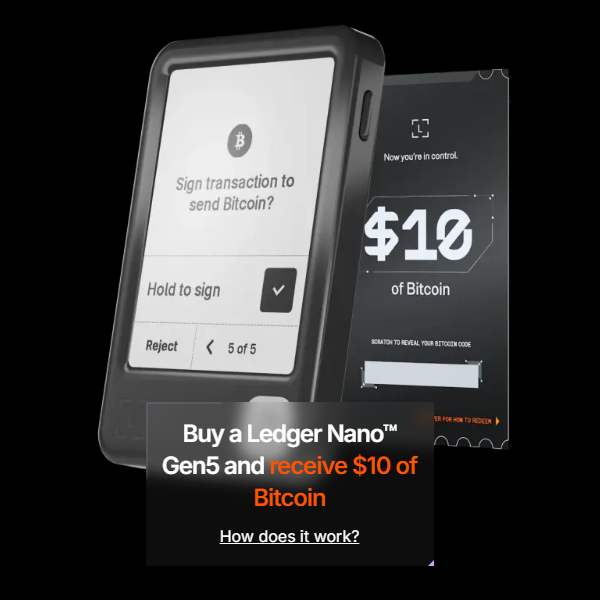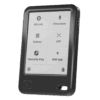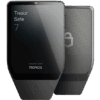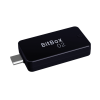The Comprehensive Information Portal for Hardware Wallets
You’ve probably landed here because you’re looking for a secure yet convenient storage option for your cryptocurrencies. You don’t feel comfortable managing your cryptocurrencies on your smartphone or even directly on an online exchange.

TREZOR hardware wallets are secure and convenient to use
You are not alone in this, and that is why I created this information portal. It is intended to help all interested parties to find comparable and independent information in your language about the best and most secure wallets – the hardware wallet.
New information about hardware wallets on the market and about cryptocurrencies in general is published here on an ongoing basis. A particular focus is on testing the latest hardware wallets. The numerous testimonials from other readers will also certainly help you.
So get straight in and take a look at the different models in direct comparison and decide for yourself which hardware wallet is right for you.
If you would first like to learn something general about hardware wallets, it is best to start with the following guide.
What are Hardware Wallets?
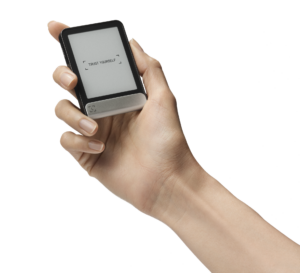
This is what a typical hardware wallet (Ledger Flex in the picture) looks like: Concentrated technology and cryptography packed into a small case.
Hardware wallets are a very secure way to store your cryptocurrencies. Cryptocurrencies or coins, cyber money or cyber currencies are new currencies such as Bitcoin, Ethereum or Dash.
Storage via hardware wallets uses a device that can be connected to your computer, laptop, tablet or smartphone. You then initiate a transaction via a program on your end device, while the transaction is processed separately on the device.
This means that all important actions take place on the secure, encapsulated hardware. A wallet presented here is therefore one of the most secure storage options. Despite the increased security, a hardware wallet is now just as convenient to use in everyday life as an online wallet.
How Hardware Wallets work
A transaction is commissioned via software or an app and then confirmed and verified by a device ( Ledger Stax in the picture). Your private keys never leave the device and remain secure.
They are easy to use, but also the safest on the market to date. But how does such a hardware wallet actually work?
The first Set-Up
Once you have decided on a model, the next steps are always very similar:

Setting up a hardware wallet ( Ledger Blue in the picture) is always quite similar and not difficult.
- Order the package directly in a store from the manufacturer or from an official reseller. Private dealers could manipulate devices for their own purposes!
- Wait until the package has arrived. Cryptocurrencies are becoming increasingly popular and the demand for a hardware wallet is always immense at certain times.
- On receipt, check that any seals are not broken to rule out simple attempts at tampering. Even better are models such as the Ledger Nano X (to the test report), which use software-side verification of the firmware. These immediately detect whether the device has been tampered with each time it is connected.
- Now follow the instructions in the quick start guide. In most cases, you only need to install software on the end device and connect the hardware wallet to the computer.
- It is now important to create a backup of your device. This allows you to restore your wallet if the device breaks or is stolen. To do this, you usually have to write down 24 words or the backup is automatically saved digitally but securely, as with the BitBox02 (to the test report).
- Choose a pin or password for your wallet to protect it from unauthorized access.
More steps are not required for most device wallets. You are now ready to carry out transactions: For example, you can now transfer purchased coins from an insecure exchange to your private “Swiss bank account”.
Technical functionality
The special feature is that the transaction is entered on your end device via the software or the browser extension, but the transaction is then encapsulated and signed on the hardware wallet. All the necessary data is sent to the hardware via USB, Bluetooth, NFC or other transmission options.
This means that your private keys never leave the device – apart from the backup, of course, which you store securely and offline.
You can find a detailed report on how a hardware wallet works here.
Why you need a hardware wallet
The appliances presented here are a form of cold storage. This means that access to the virtual wallet, i.e. the private key, was kept offline and no one but you ever had access to it.
As a cryptocurrency user, it is important to know that you are only really the owner of your virtual currency if you are the only one who knows and has the private key.
Paper wallets as a form of cold storage
In addition to the physical devices discussed here as cold storage, there are also so-called paper wallets, where the public and private keys are best generated on an offline computer and then printed out. These are rather cumbersome to use, as you should always spend all the coins on this address at once.
In any case, you should opt for cold storage, as exchanges and online wallets have often fallen victim to hackers in the past. Annoyingly, many customers have lost their systems because the private keys were not with them, but with the service provider.
How secure is your cryptocurrency?

With a hardware wallet, you give your coins maximum security.
Hardware wallets are the most secure thing you can find on the market to protect cryptocurrencies from thieves, malware, viruses and other possible attacks.
One-way transactions
On the one hand, even a hardware wallet cannot protect you from incorrect transactions. All currencies of this type, such as Bitcoin, are one-way transactions. This means that once coins have been sent, they cannot be retrieved. You should therefore always double-check the recipient address.
What happens in the event of theft
In addition, there is always a certain risk – as with any other currency – that your device, including your pin or even your backup, will be stolen. With conventional currencies, apart from cash, there is a certain amount of security from the bank or the state; with cryptocurrencies, the responsibility lies with you alone.
Theft is usually not so bad, as almost all models are protected by a pin or password. With most models, such as the TREZOR, an incorrect pin delays the re-entry. This would take about 17 years to try 30 pins! Or the device is even reset if the password is entered incorrectly several times, as is the case with the BitBox02.
In this case, or in the event of damage, a backup can be used to restore the keys without any problems.
Backup and restore
You should always make sure that you carefully go through the backup options for your wallet.
Usually you have to write down a recovery seed at the beginning, which consists of around 24 words, and keep it safe. If your device is stolen or broken, you can restore your private keys or directly reset a new device to the old status.
This recovery seed is therefore extremely important and should be treated as confidentially as possible. It is best to make a copy of this – by hand, of course – and keep it in a second, separate, safe place.
There are already companies that specialize in providing tools to store this backup or other important data in metal. This means that fire and water, among other things, are no problem.
This option of storing the recovery seed is certainly interesting for owners of a large number of cryptocurrencies. If you fall into this category, please read the test report on the Cryptosteel tool. All reports on these backup products can be found here.
For normal users, it is usually sufficient to keep the note in a secure environment and, if possible, a copy of it in a separate place. A digital copy on your normal computer is not recommended, as this could be read by keyloggers or malware and viruses at a later date.
Advantages and disadvantages of physical wallets
Even if the advantages of cold storage as with a hardware wallet clearly outweigh the disadvantages, the disadvantages should also be pointed out.
Important criteria for hardware wallets
If you are looking for a hardware wallet, you should obtain comprehensive information beforehand and compare as many wallets as possible. This way you can be sure that the wallet meets your own requirements.
As the information on these hardware wallets can only be found on the Internet, research is often very difficult. Only fragments of information can be found in various forums, blogs and manufacturer websites. And that’s mainly in English.
Therefore, this portal is very well suited to get a complete overview of all hardware wallets on the market and to study the available information and test reports in detail. When it comes to finding the right hardware wallet, various features need to be compared with each other. A glance at the table above can give you a first rough overview. A click on Details or Test then provides all the remaining information.
Supported cryptocurrencies
One of the most important criteria is, of course, how many and which cryptocurrencies the hardware wallet supports. This category indicates which coins you can manage with the corresponding wallet.
Basically, it can be said that all models support Bitcoin, as it is still the most widely used currency. This means that most coins based on Bitcoin, such as Litecoin, Dogecoin or Zcash, are also supported. Cryptocurrencies based on a different technology, such as Ethereum or Monero, are not necessarily also supported.
If you want to find out exactly which hardware wallet supports which coins, we have something for you. On this page you will find a table with all hardware wallets and which cryptocurrencies they support. You can filter these yourself according to your wishes.
Compare the connectivity of hardware wallets
Most hardware wallets can be connected to a computer via a USB cable in order to exchange data between the two devices. This can quickly become annoying, especially on a smartphone, as an OTG cable is also required here.
So if you also want to work wirelessly with your hardware wallet, you should pay attention to the corresponding feature. Hardware wallets that have Bluetooth or NFC on board are conceivable here, for example.
Input and output options
A comparison is often worthwhile here. Because if you do without a display on your hardware wallet, you either compromise on security or have to additionally verify transactions via your cell phone.
There are now also hardware wallets with touchscreen input options. However, hardware wallets with a full keyboard or just a few buttons are also possible.
Operation and setup
In my tests, I attach great importance to normal, everyday tasks. How a transaction is made or simply how the hardware wallet is unlocked. This should be smooth and easy to carry out. There should be no slow loading or delays when using the software or hardware wallet.
If there are any anomalies here, this is noted in the test report and affects the final overall result.
Choose the right manufacturer

The Ledger Shop convinces with very good hardware wallets, fast shipping from France, various payment methods and prices in euros.
You should always buy a hardware wallet directly from the manufacturer or from stores that are certified by the manufacturer. The reason is that manipulation can never be ruled out, even with the most modern security measures such as Ledger’s “Anti-Tampering Technology”. If you buy directly from the manufacturer’s webshop, the risk of receiving a manipulated hardware wallet is kept as low as possible.
Unfortunately, not all manufacturers have a warehouse in Europe. You should therefore bear in mind that customs duties or other shipping fees may apply when purchasing certain hardware wallets. Payment methods and exchange rates should also be carefully compared and observed, as some manufacturers only accept Bitcoin and prices are quoted in American dollars.
Important comparison criterion: the price
Last but not least, the price is of course also an important criterion. It is clear that the purchase price of a hardware wallet should be in proportion to the cryptocurrencies to be protected.
However, you should also pay attention to the different currencies, as many hardware wallets state the RRP in American dollars. In addition, the prices may be higher at this time as they are maintained manually or additional shipping costs may be incurred. You can find out more in the disclaimer.
The hardware wallet comparison at hardware-wallets.net
| 1 | 2 | |
|---|---|---|

|
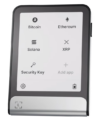
|
|
| 2 discount offers | 2 discount offers | |
| Model | Ledger Stax | Ledger Flex |
| Test Result |
|
|
| Brand | Ledger | Ledger |
| Platform | Windows, Linux, Mac, Android, iOS | Windows, Linux, Mac, Android, iOS |
| Altcoin Support | ||
| Supported Coins | 5.500+ (to the complete list) | 5.500+ (to the complete list) |
| Open Source | ||
| Secure Element | ||
| Display as 2FA | ||
| Interfaces | USB, NFC, Bluetooth | USB, NFC, Bluetooth |
| Input Options | Touchscreen | Touchscreen |
| Weight | 45.2g | 57.5g |
| Size | 85x54x6mm | 78.4x56.5x7.7mm |
| Reviewto the shopto the discount offer | Reviewto the shopto the discount offer |
Click here to compare all hardware wallets.
The market for hardware wallets continues to grow, so it’s easy to lose track. However, if you are looking for a secure storage option for your cryptocurrencies, you should first find out exactly what the individual hardware wallets are made of and whether they meet your requirements.
To make it as easy as possible for you to compare hardware wallets on hardware-wallets.net, we recommend using a table view. Here you can compare a selection of the most important product details at a glance.
On the one hand, you can fall back on ready-made tables that list the top models. Or you can generate your own individual comparison by using this comparison form. Here you can compare up to five hardware wallets of your choice. From there, it’s just one click to the detailed test reports.
Why the real test of hardware wallets is important
Anyone coming into contact with bitcoins or other cryptocurrencies for the first time tends to leave their currency in the exchange where the coins were purchased or in an online or smartphone wallet, for example in the blockchain wallet.
Almost all providers promise a high level of security, but the past of hacked exchanges or insecure software and online wallets has shown that a total loss cannot be ruled out. If you are not the only one in possession of the private keys for your addresses, there is always a certain risk.
Risks of software and online wallets

Software and online wallets pose a risk to your coins.
Conceivable examples here are
- Through a man-in-the-middle attack, someone who has access to the software plunders the customers’ addresses. Due to the anonymity offered by these currencies, it is not unlikely.
- A hacker finds a way to hijack the provider’s infrastructure.
- Your own computer or smartphone could be on an insecure network or you could be infected with malware. This could allow private keys to be read or transactions to be carried out.
- You have downloaded a scam wallet that specializes in the inexperienced in the cryptocurrency jungle. These can usually be found in the well-known app stores. At first they seem to work smoothly, until one day your account balance reaches 0.
Combination of security and practical handling: hardware wallets
On the one hand, we have the high-risk, quick and easy-to-use software and online wallets. On the other hand, there are “cold wallets”, such as paper wallets, which are very cumbersome to use, as they should only be used once.
Hardware wallets are therefore a link here. All hardware wallets tested and indexed here are on the one hand very secure, as the private keys are stored and generated in an isolated part of the hardware wallet. On the other hand, they are also easy to use, as some of them can even be integrated into well-known software and online wallets. The difference is that you now also have to link the hardware wallet to sign the action and, if necessary, confirm it on the hardware wallet. Similar to the TAN procedure at a conventional bank.
For this reason, it is very important to purchase a hardware wallet in good time to prevent the loss of your investment. You should therefore read the hardware wallet test reports or use the comparison options on this page.
How does a test on hardware-wallets.net work?
This page was created to make your choice as easy as possible. It is primarily intended to help cryptocurrency enthusiasts find their way through the jungle of wallet information.
First, the basic information about each wallet is compiled, for example the size, weight and supported cryptocurrencies. The manufacturers’ websites, other test reports or our own measurements and tests serve as a source here.
The information is compiled together with images, prices and a short introductory text to form a product page that lists all the information in a very factual manner. As a visitor, you have the opportunity to write your own subjective experience report here.
Real tests are the be-all and end-all
The manufacturers often provide me with a free test copy. This is because manufacturers naturally have an interest in making their hardware wallet better known. Nevertheless, I also buy some of the hardware wallets myself.
From unpacking and setting up to the first transaction, everything is carefully examined and documented. Points from 0 to 100 are awarded for predefined categories, resulting in an overall rating. Because all products are evaluated according to the same criteria, you can compare the results very easily.
The test criteria
The following categories apply to all hardware wallets and result from any normal user behavior.
Each of these categories can achieve a maximum of 100 points, resulting in a total of 600 points. The percentage of the hardware wallet achieved is then displayed as an overall rating. The tests are completely independent. Even if a hardware wallet is provided free of charge for testing, this does not affect the overall rating.
If a product has not yet been tested, this overall rating will not appear, but only an item description and important product data. This includes, for example, which currencies are supported or general advantages and disadvantages, which you can find out through online research.
The six test criteria
- The first impression
This is where we really start at the beginning: How is the Hardware Wallet packaged? Is everything understandable? Is the wallet securely packaged? What accessories are included in the packaging? How is the hardware wallet processed? - Setup
This section of the test report describes the setup process. We also check whether the instructions are understandable and how easy it is to set up. If something here is negative, this will affect the score in this category. - How to use
Depending on the hardware wallet, different functions are tested here that everyone uses very often in everyday life. This almost always includes making a transaction via the in-house software wallet or what setting options are available. What is important here is how the hardware wallet performs. - Compatibility
When it comes to compatibility, we take a closer look at which hardware and software is supported by the hardware wallet. Another important point is, of course, which cryptocurrencies are supported.
- Documentation & Support
Documentation and support also play an important role. Possible questions that are asked here are, for example:- Are operating instructions or a functional description included?
- Is there a Frequently Asked Questions (FAQ) page, help and service/support databases?
- In which languages is the documentation available?
- How can I contact the manufacturer’s support team?
- Security
The test here is limited to all the security measures that this wallet has to offer. Is it possible to protect the wallet with a pin or is it possible to set up hidden wallets? Is the wallet perhaps even waterproof or fireproof? Or completely anonymous? This also includes obtaining information from security experts. If there is appropriate criticism, this will be included if necessary, stating the source.
